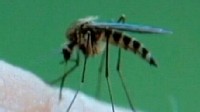Earth Watch Report – Friday August 24th, 2012
August 24, 2012 by desertrose
Mysterious Bubbles and Sinkholes
Officials Find Another “Bubbles on the Bayou” Site in Louisiana Near Bayou Corne
The Assumption Parish Police Jury said it was discovered Monday between two previous sites in Grand Bayou.
A news release classified the bubbling as small and added it will be monitored daily.
A meeting is scheduled for Friday at St. Joseph the Worker Church Hall in Pierre Part at 6:30 p.m.
Tuesday is day four of drilling at the observation well near the giant South Louisiana sink hole in Assumption Parish. The company believed to be responsible for the sink hole, Texas Brine, brought members of the news media to examine what they hope will be a good piece of evidence as to what exactly happened at the sink hole 18 days ago.
The observation well is being used to show Louisiana DEQ officials exactly what happened to create the sink hole, or what they call a slurry.
Texas Brine is hooking its wagon to a 140-foot, 10-story drilling rig, and placed just 1,000 feet from the sink hole. The plan is for the well to drill to the salt dome believed to be responsible for the sink hole, and take observations of the dome. Those observations will be sent topside for analysis.
John Boudreaux is tired, he has worked 18 straight days at the staging area in Bayou Corne. Because the drilling will last at least another 40 days, he hopes things will be quiet.
“You have really two different events. You have the drilling, the observation event as they call it, but you have the sink hole and monitoring that and make sure that doesn’t expand or move any further,” said Boudreaux.
“We’ve got the casing, they are now drilling into the cap rock which covers the salt dome and I think once they get through that, things may move a little more rapidly,” said Sonny Cranch with Texas Brine.
Cap rock is being pulled out of the hold at 486 feet. It is pulverized by the drill bit before being sucked out of the ground. They are drilling 24 hours a day, seven days a week and Texas Brine is hoping they get some answers once the dome is pierced.
“All we want to know is what has happened,” said Cranch.
The drilling platform will be drilling for at least another 40 days. Texas Brine says 40 days is an optimistic goal.
Officials said the site of the slurry is still off limits and the cleanup remains halted.
The parish has requested Texas Brine provide a plan for continued cleanup.
*************************************************************************************************************
Biological Hazards / Wildlife / Hazmat
| 23.08.2012 | Biological Hazard | USA | State of California, Burbank [700 block of Screenland Drive] |
Biological Hazard in USA on Thursday, 23 August, 2012 at 06:35 (06:35 AM) UTC.
| Description | |
| Health officials have confirmed four people have contracted Murine typhus in Burbank. Two cases originated in the 700 block of Screenland Drive. Both of those men were treated at local hospitals and released. Murine typhus is also called endemic typhus and is transmitted by fleas. While rat fleas are the most common transmitters, cat fleas and mouse fleas can also transmit the Murine typhus virus. | |
| Biohazard name: | Murine typhus |
| Biohazard level: | 2/4 Medium |
| Biohazard desc.: | Bacteria and viruses that cause only mild disease to humans, or are difficult to contract via aerosol in a lab setting, such as hepatitis A, B, and C, influenza A, Lyme disease, salmonella, mumps, measles, scrapie, dengue fever, and HIV. “Routine diagnostic work with clinical specimens can be done safely at Biosafety Level 2, using Biosafety Level 2 practices and procedures. Research work (including co-cultivation, virus replication studies, or manipulations involving concentrated virus) can be done in a BSL-2 (P2) facility, using BSL-3 practices and procedures. Virus production activities, including virus concentrations, require a BSL-3 (P3) facility and use of BSL-3 practices and procedures”, see Recommended Biosafety Levels for Infectious Agents. |
| Symptoms: | |
| Status: | confirmed |
| 24.08.2012 | HAZMAT | USA | State of Washington, Richland [Hanford Nuclear Reservation] |
HAZMAT in USA on Wednesday, 22 August, 2012 at 03:18 (03:18 AM) UTC.
| Description | |
| As part of the biggest, costliest environmental cleanup project in the nation’s history – disposing of 53 million gallons of radioactive waste at the Hanford Nuclear Reservation in Washington state – one thing was supposed to be sure: Waste stored in the sturdy, double-wall steel tanks that hold part of the toxic ooze wasn’t going anywhere. But that reassurance has been thrown into question with the discovery of a 3-foot-long piece of radioactive material between the inner and outer steel walls of one of the storage tanks, prompting new worries at the troubled cleanup site. “We’re taking it seriously, and we’re doing an investigation so we can better understand what it is,” Department of Energy spokeswoman Lori Gamache said. The discovery marks the first time material has been found outside the inner wall of one of the site’s 28 double-shell tanks, thought to be relatively secure interim storage for the radioactive material generated when Hanford was one of the nation’s major atomic production facilities. It opened in 1943 and began a gradual shutdown in 1964. Cleanup started in 1989. The $12.2-billion cleanup project eventually aims to turn most of the waste stored at Hanford into glass rods at a high-tech vitrification plant scheduled to be operational in 2019, assuming the formidable design and engineering hurdles can be overcome. In the meantime, plant engineers have been gathering waste stored in the facility’s 149 aging, leaky single-wall storage tanks and redepositing them in the double0-shell tanks for safekeeping. Over the years, more than 1 million gallons of waste has leaked out of 67 single-wall tanks into the surrounding soil.”There’s been this presumption that the double-shell tanks at least are sound and won’t fail, and they’ll be there for us,” said Tom Carpenter of the advocacy group Hanford Challenge. Several days ago the group obtained a memo from the cleanup site detailing discovery of the mysterious substance. “This changes everything. It is alarming that there is now solid evidence that Hanford double-shell has leaked,” Carpenter said in a separate statement on the discovery. The 42-year-old tank, known as AY-102, holds about 857,000 gallons of radioactive and other toxic chemical waste, much of it removed several years ago from a single-shell storage tank where it was considered unsafe. Workers who relocated the material fell ill simply from inhaling the fumes, Carpenter said. Department of Energy officials said none of the material has leaked outside the outer steel wall or the concrete casing that surrounds the structure, and there is no present hazard to workers or groundwater. They said they were trying to determine whether the material leaked from the inner tank or oozed from a nearby pit into the space between the two walls, known as the annulus. “There’s no evidence of it leaking the liquid from the inner shell right now,” Gamache said. The material – a mound 2 feet by 3 feet by 8 inches — is dry and doesn’t appear to be growing. It was discovered during a routine video inspection of the annulus conducted last month from a viewpoint not normally used. The possibility that it could have come as overflow from a nearby pit arises because a pipe runs into the annulus from the pit, Gamache said.But Carpenter, who has talked extensively with workers at Hanford and was briefed Tuesday by one of the Department of Energy’s senior officials at the tank farm, said he believed the evidence was strong that there was a leak. “I know Hanford would like it not to be so. But the people I’m talking to at the Hanford site say, no, it really does look like a leak,” he said. “From what I’m being told and looking at the pictures, it appears it’s coming from under the tank and going up. Which is a far cry from it coming from the pit.” Gamache said an initial sample of the material revealed that “the contamination levels were higher than expected” and it definitely contained radioactive waste. “There wasn’t enough material to fully characterize the material, so we’re preparing to pull another sample. That will probably happen around the mid-September time frame,” she said. Carpenter said that if the inner tank leaked, it would probably prompt the need to reevaluate expectations that the tanks could safely act as interim storage vessels for several decades. |


 The United Nations health agency today reported that the cholera outbreak in Sierra Leone was escalating and stressed the need to rapidly scale up the response to the spread of the of the frequently fatal water and food-borne disease.
The United Nations health agency today reported that the cholera outbreak in Sierra Leone was escalating and stressed the need to rapidly scale up the response to the spread of the of the frequently fatal water and food-borne disease.



















 The use of combat weapons on German home soil is only acceptable as a last resort
The use of combat weapons on German home soil is only acceptable as a last resort





